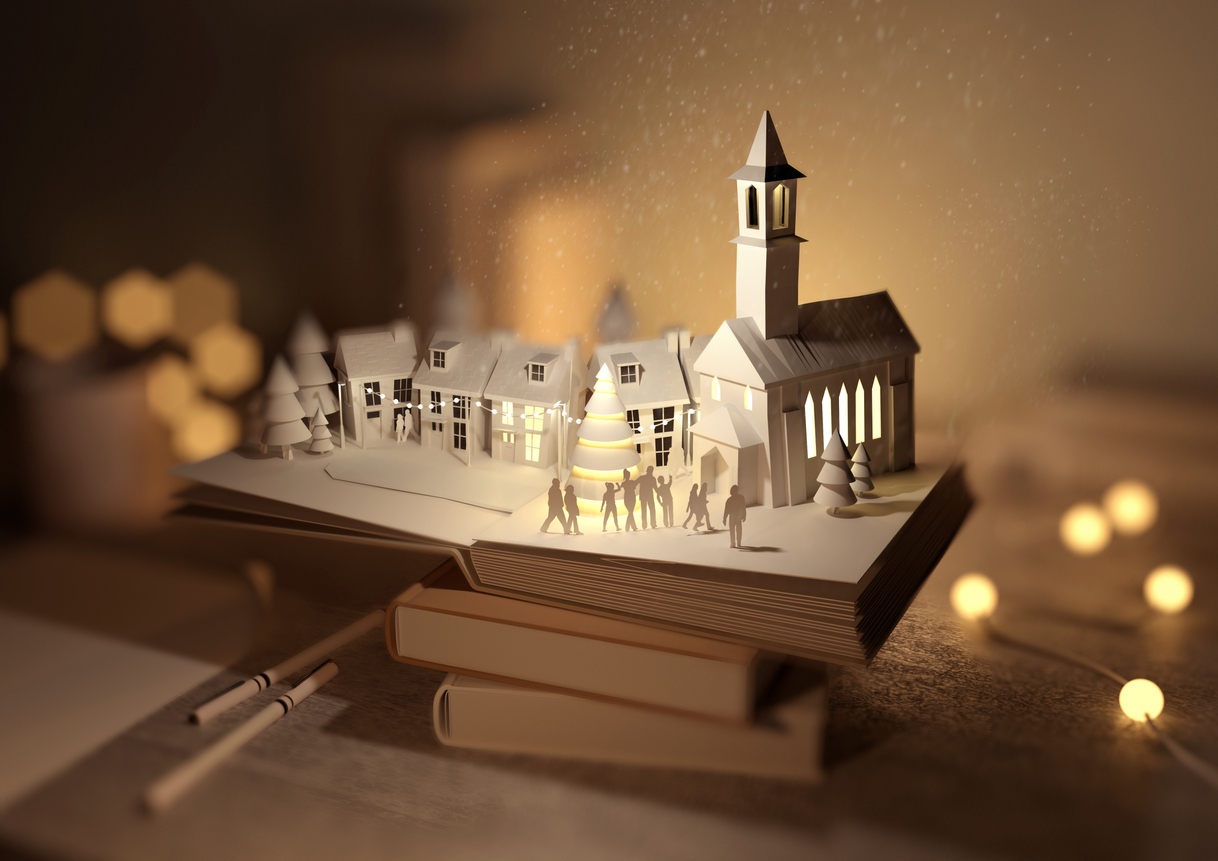
We are accustomed to referring to fiction as “fake” and nonfiction as “real.” Fiction lives in the English class, and the facts live in social studies, science, and math. However, as we are seeing in both real life and our evolving understanding of literacy, the line between fiction and nonfiction often blurs. The reality is that fiction can be a valuable tool in the social studies classroom as we interrogate primary and secondary sources and learn about the world around us.
Jennifer Powell, a librarian, recently posted on Twitter, “I have made it my mission to unteach children that ‘fiction is fake.’ Here are my new definitions I started teaching today: Nonfiction = learning through information. Fiction = learning through imagination.” All fiction is rooted in nonfiction—real experiences, real relationships, real conflict, real character traits. Treating fiction and nonfiction as though they are cousins rather than strangers opens the door for resources and texts that can be used across content areas.
In the social studies classroom, fiction can be used to practice making predictions, understanding motivations, understanding conflicts, role-playing, and immersing ourselves in a setting or scenario. Let’s look at some specific activities that take advantage of what fiction has to offer while still achieving the goals of your social studies classes.
Cover Art
Encouraging students to examine and analyze cover art is a great way to get them thinking critically about images and symbolism. Consider having students analyze a cover and consider how the elements work together to create a message. You might also have students engage in a Gallery Walk of several covers about the same historical event or person and think about what trends they notice and what they can infer about that event or person from the covers.
Character Profiles
Leverage rich character development in your social studies classroom by having students read a mentor text and then create a new “character” for a historical moment. Have students think about things like appearance, personality, conflicts, etc. You might also consider having students read a fictionalized version of a real historical figure and analyze the similarities and differences between the character they created.

Setting the Stage
In many fictional texts, the setting is almost another character, influencing actions and conflicts. Ask students to compare a fictionalized setting to primary source documents about the same place or time and consider why an author might make creative changes or descriptions of that setting. You can also lean into students’ creative sides and have them describe a setting they are learning about as though it is in a novel—what would “characters” see, smell, hear, or touch?
Telling the Future
Science fiction, dystopian fiction, and speculative fiction are all wildly popular subgenres that play on the “what if” of real life. Consider having students read an excerpt of speculative or dystopian fiction that explains how the society reached that point and consider what current events might lead us down a similar path. Alternately, provide students with a mentor text and have them craft their own speculative “flash forward” based on a historical event.

Explode the Moment
Descriptive writing is a hallmark of fiction, but it doesn’t have to live there exclusively. Ask students to choose a single moment from a major event or a single historical figure in a specific situation and “explode it” with details (both real and imagined). You can also venture into artistic expression by having students construct a 360-degree “view” of a key moment or place.
The Eyes of the Beholder
A key element of fiction is point of view. Whose perspective the story is told from has enormous implications for the reader’s understanding of events, characters, and themes. While examining primary sources, have students consider how a speaker’s personal life or background plays into his or her actions and beliefs. You can also have students retell an event from the point of view of an object or an alien visitor.
As you read fiction in your personal life, be on the lookout for characters, settings, points of view, and descriptions that you can bring into your social studies classroom to enrich discussions and engage your students. Let learning through imagination support your instruction as your students concurrently develop their critical thinking and social studies skills.
Get hundreds of literacy-building activities with Active Classroom
Try a free 30-day trial today
Sarah A. Honore began her career in education as a high school English teacher in Houston, Texas. She has since worked as a teacher, an instructional coach, a curriculum writer, and a director of English Language Arts at the district level. Her passions include literacy across content areas, diverse books, and supporting teachers and leaders. While not a social studies teacher by trade, Sarah loves exploring the connections between these two contents in order to enrich the classroom experience for both teachers and students.
